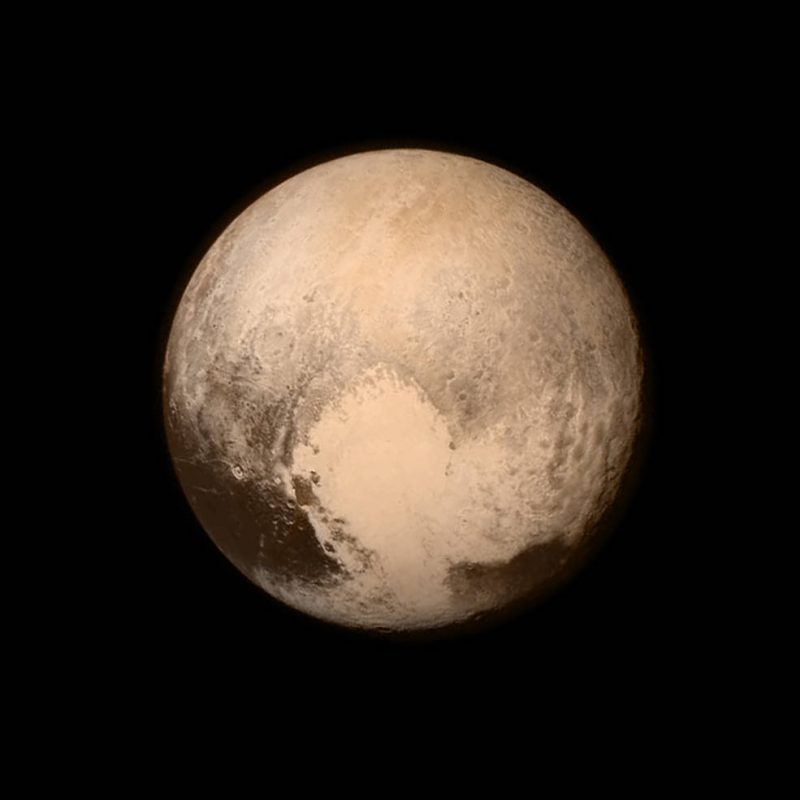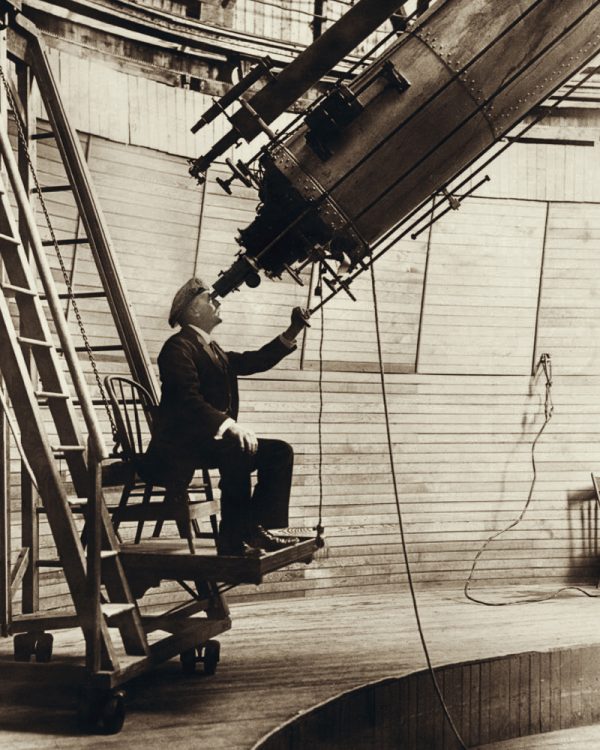
May 1, 1930: Pluto gets a name
On May 1 in the year 1930, 11-year-old Venetia Burney in Oxford, England, received £5 (now $6.87 U.S.) for her clever suggestion of the name Pluto for a little world at the outer reaches of our solar system. At the time, Pluto was considered our solar system’s outermost and newest planet.
The story began earlier that year, when Clyde W. Tombaugh – an assistant at the Lowell Observatory in Flagstaff, Arizona – discovered Pluto on February 18, 1930.
Percival Lowell and Planet X
And it began earlier still, when the American astronomer Percival Lowell initiated the search for a planet beyond Neptune in the early part of the 20th century. He said he was searching for a Planet X. Lowell believed that something large was gravitationally pulling on Neptune and the next planet inward, Uranus. He felt that this unseen Planet X was affecting the shape of the orbits of Uranus and Neptune. He searched from 1905 until his death in 1916, but never found this missing world.
In 1929, Lowell’s observatory in Flagstaff, Arizona, resumed the search for Planet X. The new administrators at Lowell Observatory built and dedicated a 13-inch telescope for this sole purpose. They hired 23-year-old Clyde W. Tombaugh to take systematic, painstaking photographs generally along the ecliptic, or pathway of planets in our solar system.
After a year of nightly labor, Tombaugh found an object whose orbit showed it was more distant than Neptune, but vastly closer to us than the stars. It was the object now known as Pluto.
Naming the new planet
In 1930, it wasn’t the International Astronomical Union (IAU) but the Lowell Observatory – where both Lowell and Tombaugh had conducted the search for an unseen, outermost planet – that had the right to name the new object.
According to the Library of Congress, the observatory received 1,000 suggestions worldwide. Venetia Burney suggested the name Pluto in part because it kept the nomenclature for planets in the realm of classical mythology, where Pluto was a god of the underworld.
Cleverly, the name also honors Percival Lowell, as the first two letters of the name Pluto are Percival Lowell’s initials.



Pluto loses planetary status
From its discovery in 1930 until 2006 – for over seven decades – Pluto held its place as the ninth planet of our solar system. In 2006, the IAU redefined planets and instituted the category of “dwarf planet.” The solar system contains at least five dwarf planets recognized so far by the IAU, including Pluto.
New Horizons visit distant Pluto
In 2015, the New Horizons spacecraft became the first-ever (and possibly only-ever, in some of our lifetimes) spacecraft to visit Pluto and its system of moons. NASA now says:
Pluto – which is smaller than Earth’s moon – has a heart-shaped glacier that’s the size of Texas and Oklahoma. This fascinating world has blue skies, spinning moons, mountains as high as the Rockies, and it snows, but the snow is red. These are details we didn’t know before NASA’s New Horizons spacecraft flew past in July 2015.
Pluto is a complex and mysterious world of mountains, valleys, plains and craters …
Check out Pluto’s overview page at NASA
Read about New Horizons’ next target, 2014 MU69, aka Ultima Thule (now named Arrokoth)

Bottom line: Pluto officially received its name on May 1, 1930. A girl in Oxford, England – 11-year-old Venetia Burney – suggested Pluto, a classical mythological god of the underworld and in honor of Percival Lowell, whose early efforts led to Pluto’s discovery.
The post How Pluto got its name first appeared on EarthSky.
0 Commentaires